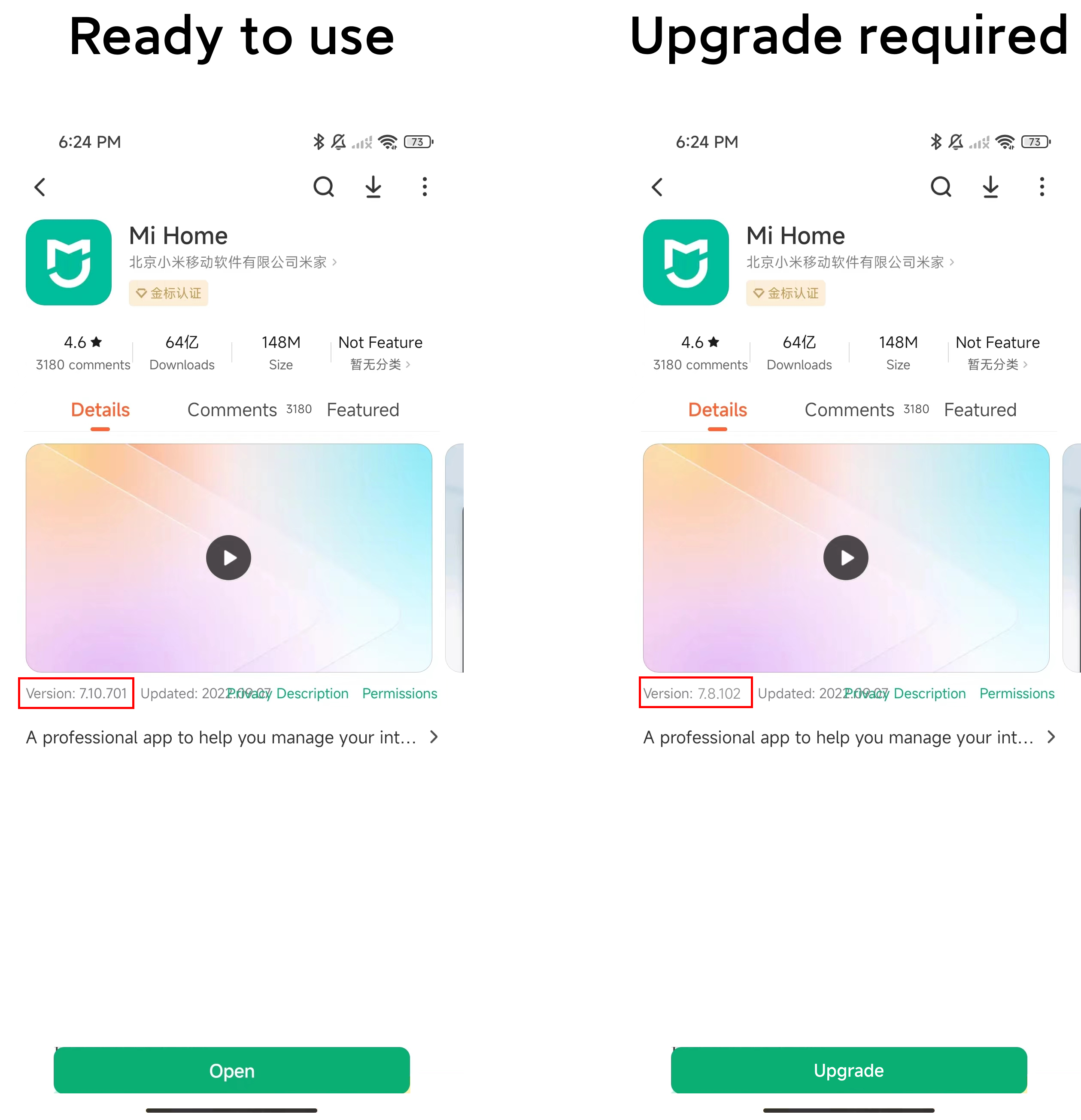Mastering Mi Home Windows: The Ultimate Guide To Transforming Your Smart Home Experience
Imagine this: your home becomes a seamless extension of your smartphone, with every light, lock, and camera controlled at your fingertips. Mi Home Windows is not just an app; it's the key to unlocking the full potential of your smart home ecosystem. Whether you're a tech enthusiast or a beginner in the world of smart devices, understanding Mi Home Windows can revolutionize how you interact with your living space.
So, what exactly is Mi Home Windows? Simply put, it’s a gateway that connects all your Xiaomi smart devices through a single platform. But it’s more than that. It’s about convenience, efficiency, and control. Picture being able to dim the lights, check your security cameras, or adjust your thermostat without ever leaving your couch. That’s the power of Mi Home Windows.
But here’s the deal—smart home technology can sometimes feel overwhelming. There’s a ton of jargon, endless device compatibility issues, and let’s not forget the learning curve. That’s why we’re here. This guide will break down everything you need to know about Mi Home Windows, from setup to advanced features, so you can make the most out of your smart home experience.
- Jameliz Benitez Smith The Rise Of Jellybeanbrains
- Marco Silva Wife Family Fulham Success What We Know
Table of Contents
- What is Mi Home Windows?
- Benefits of Using Mi Home Windows
- The Journey of Xiaomi: A Brief Overview
- How to Set Up Mi Home Windows
- Compatibility with Other Smart Devices
- Advanced Features You Need to Know
- Common Issues and Troubleshooting Tips
- Mi Home Windows vs. Competitors
- The Future of Smart Homes with Mi Home Windows
- Conclusion: Why Mi Home Windows is a Must-Have
What is Mi Home Windows?
Alright, let’s dive right in. Mi Home Windows is essentially an extension of Xiaomi’s Mi Home app tailored specifically for Windows users. It allows you to control all your Xiaomi smart devices from your PC, making it a game-changer for those who prefer managing their smart home ecosystem from a larger screen. Think of it as a control center where you can organize, automate, and monitor everything in one place.
Here’s the kicker: Mi Home Windows isn’t just for controlling lights or thermostats. It’s packed with features that let you create custom scenes, set up automation rules, and even integrate third-party devices. For instance, you can program your smart lights to turn on automatically when motion is detected or sync your smart speaker to play music as you enter the room.
Why Choose Mi Home Windows?
Let’s face it—there are plenty of smart home apps out there. So, what makes Mi Home Windows stand out? For starters, it’s incredibly user-friendly. The interface is intuitive, even for someone who’s never used a smart home app before. Plus, it offers seamless integration with Xiaomi’s vast range of smart devices, which is a huge plus if you’re already invested in their ecosystem.
- Lia Thomas Wife The Untold Story Behind The Headlines
- Filmyfly Watch Bollywood Hollywood South Movies Online
And if you’re wondering about security, don’t sweat it. Mi Home Windows uses advanced encryption protocols to ensure your data stays safe. No one likes the idea of hackers taking over their smart home, right? Xiaomi has got you covered.
Benefits of Using Mi Home Windows
Now that we’ve covered the basics, let’s talk about why Mi Home Windows is worth your time and effort. Here are some of the top benefits you’ll enjoy:
- Centralized Control: Manage all your smart devices from one app.
- Automation Features: Set up custom scenes and automate tasks to save time.
- Security Monitoring: Keep an eye on your home with real-time camera feeds.
- Energy Efficiency: Optimize your energy usage by scheduling device operations.
- Seamless Integration: Works flawlessly with other Xiaomi devices and third-party gadgets.
Let’s say you’re hosting a party. Instead of running around turning on lights and adjusting the thermostat, you can create a "Party Mode" scene in Mi Home Windows. One click, and your entire home transforms into the perfect entertainment space. Pretty cool, huh?
The Journey of Xiaomi: A Brief Overview
Before we dive deeper into Mi Home Windows, let’s take a moment to appreciate the company behind it. Xiaomi was founded in 2010 by Lei Jun and a group of tech enthusiasts who wanted to create affordable, high-quality products for everyone. Fast forward to today, and Xiaomi has become one of the biggest names in the tech industry, with a wide range of products from smartphones to smart home devices.
Here’s a quick glance at Xiaomi’s journey:
| Year | Milestone |
|---|---|
| 2010 | Founding of Xiaomi |
| 2014 | Launch of Mi Home App |
| 2016 | Expansion into global markets |
| 2021 | Introduction of Mi Home Windows |
As you can see, Xiaomi has consistently pushed the boundaries of innovation, and Mi Home Windows is just another testament to their commitment to delivering cutting-edge technology.
How to Set Up Mi Home Windows
Setting up Mi Home Windows is a breeze, but it’s always good to have a step-by-step guide, right? Here’s how you can get started:
- Download the Mi Home Windows app from the official Xiaomi website.
- Create a Xiaomi account if you don’t have one already.
- Log in to the app and connect it to your existing Mi Home account.
- Sync all your smart devices with the app.
- Start exploring the features and customizing your smart home experience.
Pro tip: Make sure your PC and smart devices are connected to the same Wi-Fi network for seamless communication. Trust me, it’ll save you a ton of headaches down the line.
Tips for a Smooth Setup
While the setup process is straightforward, here are a few tips to ensure everything runs smoothly:
- Check Compatibility: Ensure all your devices are compatible with Mi Home Windows.
- Update Firmware: Keep your smart devices’ firmware up to date for optimal performance.
- Use Strong Wi-Fi: A stable internet connection is crucial for uninterrupted control.
Compatibility with Other Smart Devices
One of the most common questions people have is whether Mi Home Windows works with non-Xiaomi devices. The answer is a resounding yes! While it’s designed to work seamlessly with Xiaomi products, it also supports a wide range of third-party devices.
Some of the popular brands that integrate with Mi Home Windows include:
- Philips Hue
- TP-Link Kasa
- Google Nest
- Amazon Alexa
This flexibility makes Mi Home Windows a great choice for those who have a mixed ecosystem of smart devices. Just make sure to check the compatibility list before adding new gadgets to your setup.
Advanced Features You Need to Know
Now that you’ve got the basics down, let’s talk about some of the advanced features that make Mi Home Windows truly shine:
Automation Rules
Automation is where things get really interesting. You can set up rules based on time, location, or sensor data to automate various tasks. For example, you can program your smart lights to turn off automatically when you leave the house or adjust the thermostat based on the weather forecast.
Custom Scenes
Custom scenes allow you to group multiple actions into a single command. Imagine creating a "Goodnight" scene that turns off all the lights, locks the doors, and sets the thermostat to your preferred temperature with just one tap.
Remote Access
Even if you’re not at home, you can still control your smart devices through Mi Home Windows. This feature is particularly useful for monitoring your home while you’re away or adjusting settings when needed.
Common Issues and Troubleshooting Tips
Even the best technology can have hiccups sometimes. Here are some common issues users face with Mi Home Windows and how to fix them:
- Connection Issues: Make sure your devices are on the same Wi-Fi network and restart your router if necessary.
- App Crashes: Clear the app cache or reinstall it if it keeps crashing.
- Device Sync Problems: Remove and re-add the devices to the app for a fresh sync.
If all else fails, don’t hesitate to reach out to Xiaomi’s customer support team. They’re known for their excellent service and can usually resolve issues quickly.
Mi Home Windows vs. Competitors
When it comes to smart home apps, there’s no shortage of options. But how does Mi Home Windows stack up against the competition? Here’s a quick comparison:
| Feature | Mi Home Windows | Google Home | Apple HomeKit |
|---|---|---|---|
| Device Compatibility | Wide range of Xiaomi and third-party devices | Limited to Google ecosystem | Limited to Apple ecosystem |
| Automation | Advanced automation rules | Basic automation | Basic automation |
| Price | Affordable | Premium pricing | Premium pricing |
As you can see, Mi Home Windows offers a great balance of features and affordability, making it a top choice for many smart home enthusiasts.
The Future of Smart Homes with Mi Home Windows
Smart home technology is evolving at lightning speed, and Mi Home Windows is right at the forefront of this revolution. With advancements in AI, machine learning, and IoT, the possibilities are endless. Imagine a future where your home anticipates your needs before you even think about them.
For instance, your smart fridge could automatically reorder groceries when they’re running low, or your smart mirror could suggest outfits based on the weather forecast. With Mi Home Windows, these futuristic scenarios are closer to reality than you might think.
Conclusion: Why Mi Home Windows is a Must-Have
In conclusion, Mi Home Windows is more than just an app—it’s a gateway to a smarter, more connected lifestyle. Whether you’re looking to enhance your home security, save energy, or simply make life easier, Mi Home Windows has got you covered.
So, what are you waiting for? Download Mi Home Windows today and take the first step towards transforming your home into a smart haven. And don’t forget to share your experience in the comments below. Who knows? You might just inspire someone else to join the smart home revolution!
- Blake Garrett Rosenthal From Mom Star To Hollywoods Next Big Thing
- Filmyfly Your Guide To Bollywood Hollywood More 2024 Update

Windows Replacement Southgate MI

Windows Replacement Taylor MI

Notes